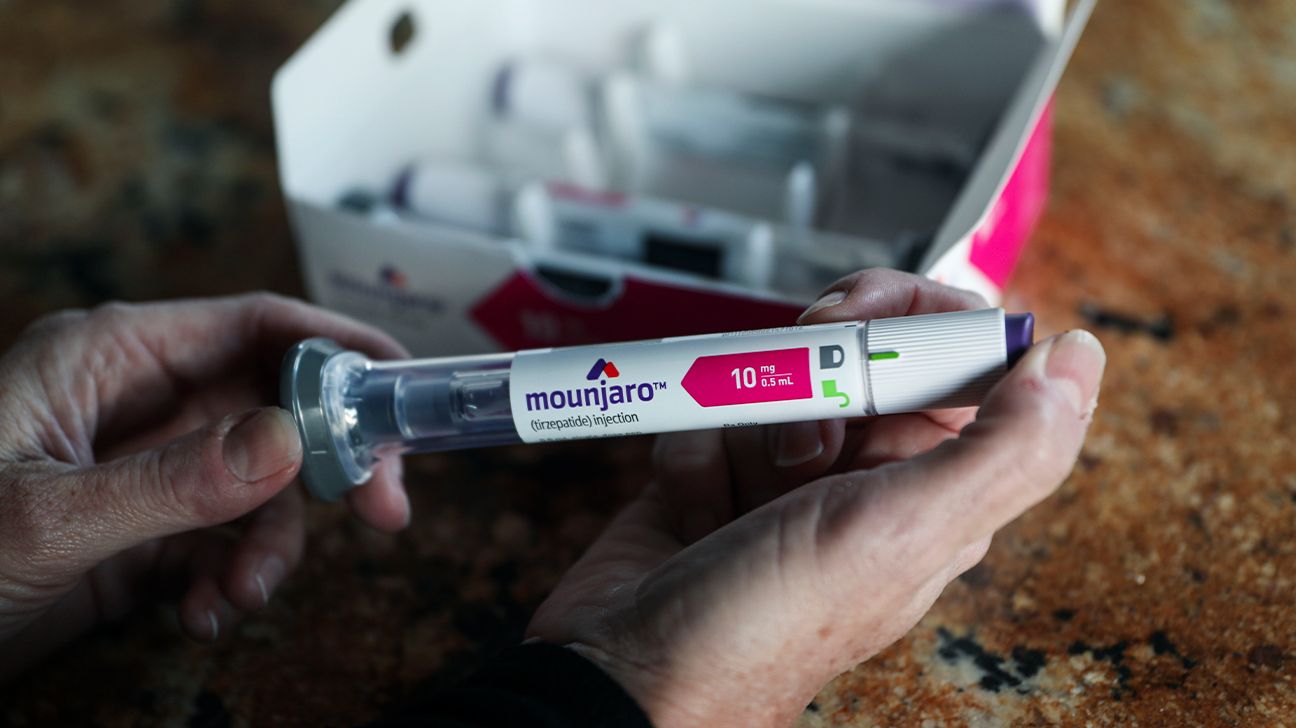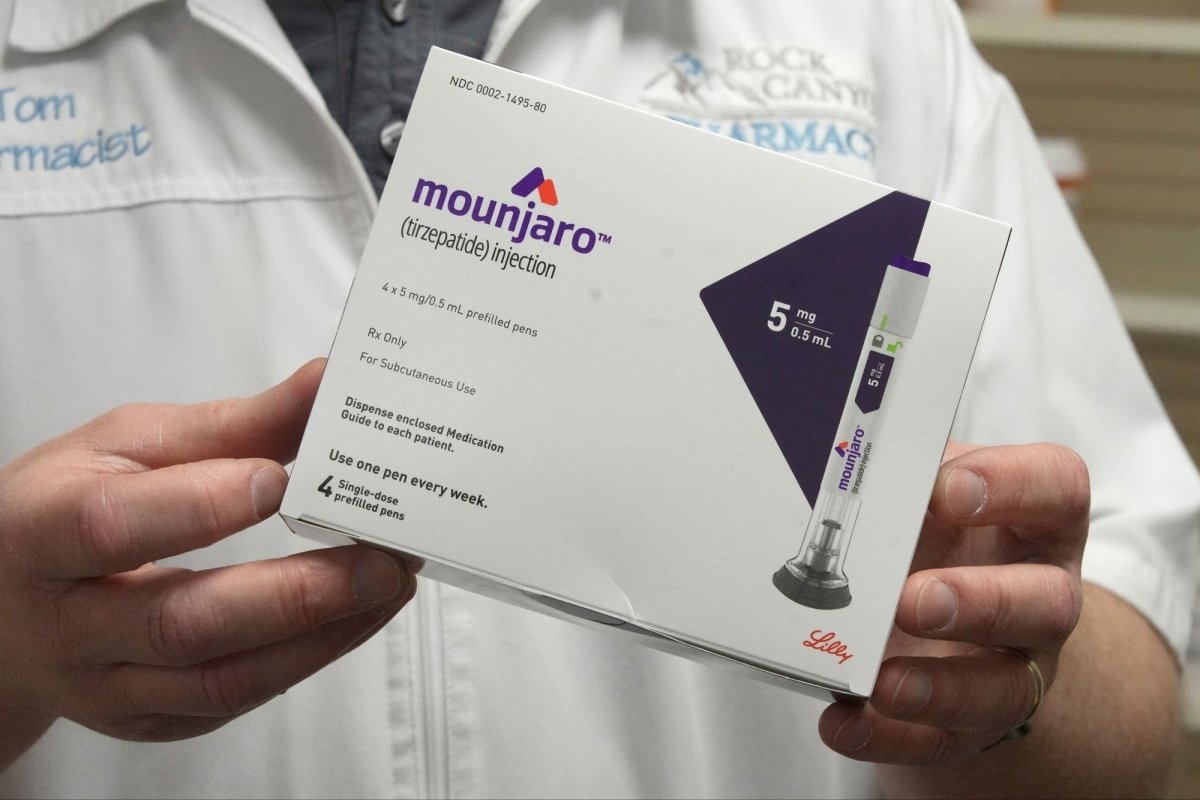Tirzepatide surpasses semaglutide in blood sugar control and weight loss in type 2 diabetes patients.
In the realm of type 2 diabetes, there are two drugs that have been grabbing headlines: tirzepatide and semaglutide. A recent comparison of these drugs has revealed that tirzepatide takes the lead when it comes to blood sugar control and weight loss. By mimicking the GLP-1 hormone and the glucose-dependent insulinotropic polypeptide, tirzepatide proves its worth in managing diabetes. The meta-analysis, which included a substantial number of patients, highlighted the significant reduction in blood sugar levels (HbA1c) and noticeable weight loss experienced by those taking tirzepatide. However, it's important to consider that with the added benefits come some side effects like nausea, vomiting, and diarrhea. Nonetheless, when choosing between the two options, factors such as cost and insurance coverage also deserve careful consideration.
weight loss in type 2 diabetes patients. on this page." src="https://aiwisemind.nyc3.digitaloceanspaces.com/aiwm-buttons/visit-official-website/visit-official-website-deep-orange-45.png">
Comparing Tirzepatide and Semaglutide
If you have type 2 diabetes, you may have heard about two medications called tirzepatide (Mounjaro) and semaglutide (Ozempic). These drugs are often prescribed to help control blood sugar levels and promote weight loss in individuals with diabetes. In this article, we will compare the effectiveness and side effects of tirzepatide and semaglutide to help you understand which medication may be the best fit for you.
Mechanism of Action
Both tirzepatide and semaglutide belong to a class of drugs called GLP-1 receptor agonists, which work by mimicking the effects of a hormone called glucagon-like peptide-1 (GLP-1). GLP-1 helps regulate blood sugar levels by stimulating insulin secretion, slowing down gastric emptying, and suppressing appetite. However, tirzepatide goes a step further by also mimicking the effects of a hormone called glucose-dependent insulinotropic polypeptide (GIP). GIP works alongside GLP-1 to provide additional blood sugar control and weight loss benefits.
Study Design
To compare the effectiveness of tirzepatide and semaglutide, a meta-analysis was conducted, which included 22 randomized controlled trials. These trials involved a total of 18,472 patients with type 2 diabetes. The participants were divided into groups receiving either tirzepatide or semaglutide, and their blood sugar control and weight loss were monitored over a certain period of time.
Number of Participants
In the 22 randomized controlled trials included in the meta-analysis, a total of 18,472 patients with type 2 diabetes participated. This large number of participants adds strength to the findings of the study and provides a more accurate representation of how tirzepatide and semaglutide perform in real-world settings.
Effectiveness of Tirzepatide
Blood Sugar Control
One of the key goals of diabetes treatment is to achieve optimal blood sugar control. The meta-analysis found that tirzepatide was superior to semaglutide in terms of blood sugar control. Tirzepatide showed greater reductions in a blood sugar marker called HbA1c compared to semaglutide. HbA1c reflects the average blood sugar levels over a period of several weeks. The higher the HbA1c level, the poorer the blood sugar control.
Weight Loss
Weight management is another important aspect of diabetes management, as excess weight can contribute to insulin resistance and poor blood sugar control. Tirzepatide demonstrated greater weight loss compared to semaglutide in the meta-analysis. Weight loss is beneficial for individuals with type 2 diabetes as it can improve insulin sensitivity and overall metabolic health.
Impact of Dosage
The meta-analysis also examined the impact of different dosages of tirzepatide on blood sugar control. It was found that the highest dose of tirzepatide had the largest effect on blood sugar, lowering HbA1c by an average of 2% compared to a placebo. This indicates that higher doses of tirzepatide may be more effective in achieving optimal blood sugar control.

Effectiveness of Semaglutide
Blood Sugar Control
While tirzepatide showed superiority in blood sugar control compared to semaglutide, it is important to note that semaglutide still demonstrated significant effectiveness in this area. Semaglutide, as a GLP-1 receptor agonist, helps stimulate insulin secretion and slow down gastric emptying, leading to improved blood sugar control.
Weight Loss
Like tirzepatide, semaglutide also promotes weight loss in individuals with type 2 diabetes. However, the meta-analysis showed that tirzepatide had a greater impact on weight loss compared to semaglutide. This suggests that tirzepatide may be more beneficial for individuals who are specifically looking to lose weight as a part of their diabetes management.
Side Effects
Tirzepatide
As with any medication, there can be potential side effects. In the case of tirzepatide, some common side effects reported in the studies included in the meta-analysis were nausea, vomiting, and diarrhea. These side effects were generally mild to moderate in severity and tended to improve over time. It is important to discuss any potential side effects with your healthcare provider before starting tirzepatide.
Semaglutide
Semaglutide also has its own set of potential side effects. The most commonly reported side effects in the meta-analysis were nausea and vomiting, similar to tirzepatide. However, it is worth noting that the overall incidence of side effects was generally lower in the semaglutide group compared to the tirzepatide group. This suggests that semaglutide may be better tolerated by some individuals.

Considerations for Patients
Cost
Another important consideration when choosing between tirzepatide and semaglutide is the cost. The prices of these medications may vary depending on your location and insurance coverage. It is recommended to check with your insurance provider to determine the cost of each medication and whether they are covered under your plan.
Insurance Coverage
In addition to cost, insurance coverage is another factor to consider. Some insurance plans may cover tirzepatide and semaglutide at different levels, which can impact your out-of-pocket expenses. It is important to review your insurance policy or consult with your insurance provider to understand the coverage details for both medications.
In conclusion, tirzepatide and semaglutide are both effective medications for blood sugar control and weight loss in individuals with type 2 diabetes. Tirzepatide has shown superior results in terms of blood sugar control and weight loss when compared to semaglutide. However, tirzepatide may also be associated with more side effects, including nausea, vomiting, and diarrhea. Cost and insurance coverage should also be taken into consideration when making a decision between the two medications. It is important to consult with your healthcare provider to determine which medication is best suited for your individual needs and circumstances.






